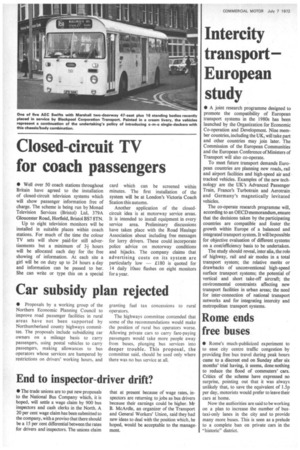Intercity transport European study
Page 30

If you've noticed an error in this article please click here to report it so we can fix it.
• A joint research programme designed to promote the compatibility of European transport systems in the 1980s has been launched by the Organization for Economic Co-operation and Development. Nine member countries, including the UK, will take part and other countries may join later. The Commission of the European Communities and the European Conference of Ministers of Transport will also co-operate.
To meet future transport demands European countries are planning new roads, rail and airport facilities and high-speed air and• tracked vehicles. Examples of the new technology are the UK's Advanced Passenger Train, France's Turbotrain and Aerotrain and Germany's magnetically levitated vehicles.
The co-operate research programme will, according to an OECD memorandum, ensure that the decisions taken by the participating countries are compatible and foster the growth within Europe of a balanced and integrated transport system. It will bepossible for objective evaluation of different systems on a cost/efficiency basis to be undertaken.
The study should reveal, inter aim, the role of highway, rail and air modes in a total transport system; the relative merits or drawbacks of unconventional high-speed surface transport systems; the potential of vertical and short take-off aircraft; the environmental constraints affecting new transport facilities in urban areas; the need for inter-connection of national transport networks and for integrating intercity and metropolitan transport systems.
















































































































































